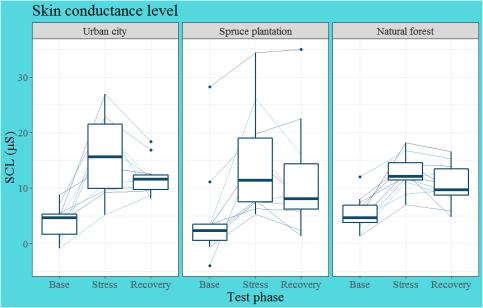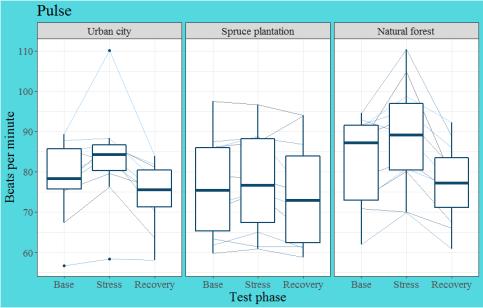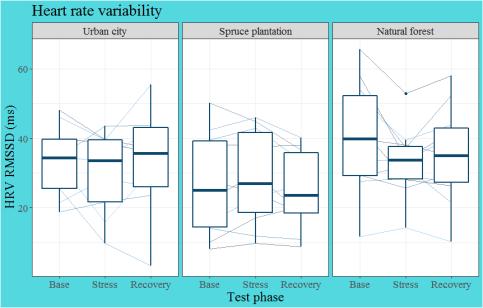Findings & Conclusions
Results
The number of participants in each test group was:
- urban city = 10
- spruce plantation = 10
- natural forest = 11
Skin conductance level

Skin conductance level is an indicator of sympathetic activity in the autonomic nervous system. Measured skin conductance increased from the baseline levels to the stress phase, meaning that all participants were in an elevated state of stress prior to the recovery phase.
The decrease in skin conductance from the stress phase to the recovery phase was only statistically significant for the natural forest group.
Pulse

Pulse is an indicator of both sympathetic and parasympathetic activity in the autonomic nervous system. The decrease in pulse was statistically significant in the natural forest group and the urban city group, but not in the spruce plantation group.
Heart rate variability

Heart rate variability is an indicator of parasympathetic activity in the autonomic nervous system. Heart rate variability is a common method that has often been used to measure stress levels in humans. In this study, however, the measured heart rate variability was insufficient to provide any significant results and did not indicate any differences in stress alleviation between the three environments.
Conclusions
Combining the effects from the skin conductance and the pulse measurements it was evident that the natural forest had the most alleviating effect out of all three environments. The spruce plantation and urban city groups had both an alleviating effect, but it was not statistically significant.
The stress alleviation effect is not equal when viewing different natural environments. Recovery in the spruce plantation or urban city did not activate an equally strong enough response from the parasympathetic nervous system as the natural forests did when the body recovered from stress.
Biodiversity in forests may have an important role in stress alleviation as an ecosystem service and for the future of human health and well-being.
Responsible for this page:
Director of undergraduate studies Biology
Last updated:
05/19/21
